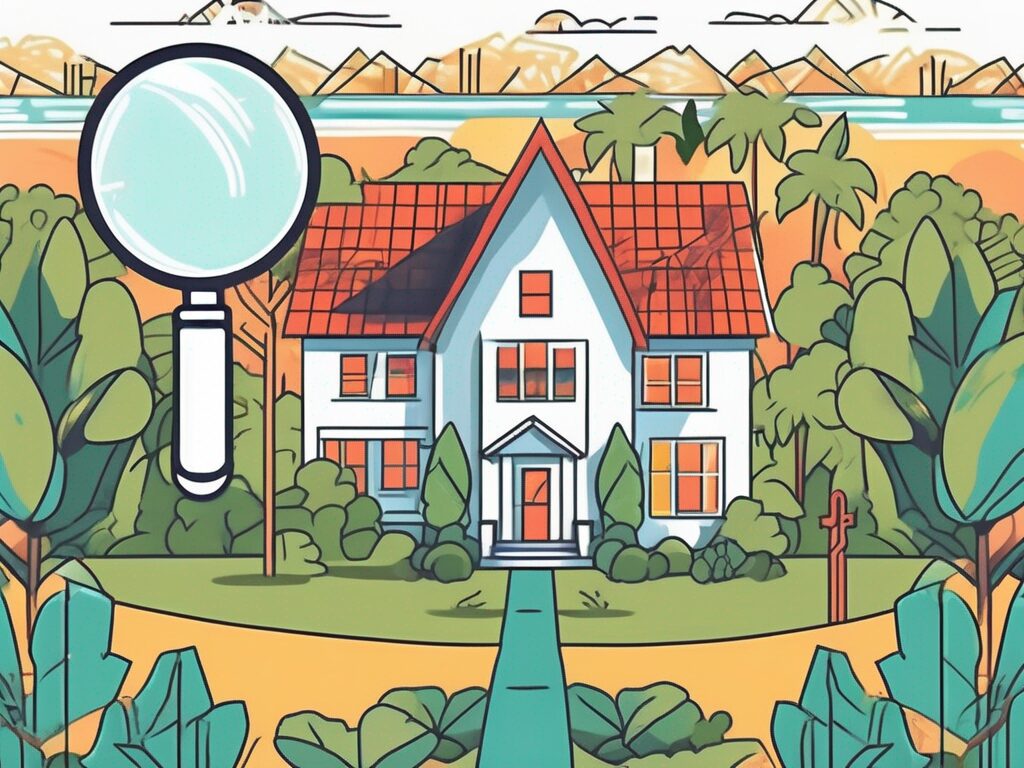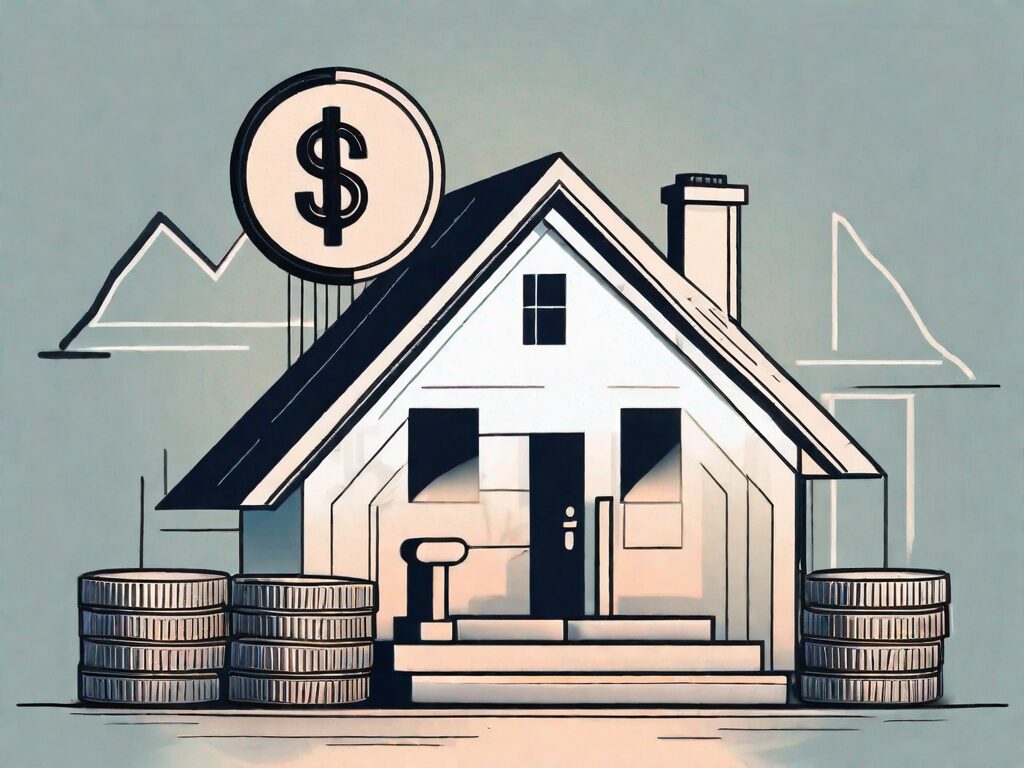
Agent A-Team or Solo Superhero? Finding the Right Real Estate Partner for Your Selling Journey in Wildwood Florida
When it comes to selling your home in Wildwood, Florida,…
January 29, 2024
Buying a home is a major milestone for many people, and for first-time home buyers, it can be an overwhelming process. One of the most important decisions you will need to make is how much money to put down as a down payment. In this article, we will explore the various down payment options available to first-time home buyers in 2019 and help you determine the ideal down payment for your situation.
Before we delve into the different down payment options, let’s take a look at the average down payments for first-time home buyers in 2019. According to recent data, the median down payment for first-time buyers was 6% of the purchase price. However, it’s essential to note that there is a wide range of options available, and the down payment you choose will ultimately depend on your financial situation and goals.
When it comes to purchasing your first home, the down payment is a crucial factor to consider. It determines the initial investment you make and affects various aspects of your mortgage, including monthly payments and interest rates. Understanding the different down payment options available can help you make an informed decision that aligns with your financial capabilities and long-term plans.
When it comes to down payments, one size does not fit all. There are several options available to first-time home buyers, each with its unique benefits and considerations. Let’s explore them in more detail.
One of the most significant advantages of having multiple down payment options is the flexibility it provides. It allows you to tailor your down payment to your specific needs and financial situation, ensuring that you can comfortably afford your new home.
For some first-time buyers, coming up with a substantial down payment may be a challenge. In such cases, a 0% down payment option can be an attractive choice. With this option, buyers can finance the entire purchase price of the home without putting any money down upfront.
The main advantage of a 0% down payment is that it eliminates the need to save up a significant amount of money before purchasing a home. This can be particularly appealing for individuals who are eager to enter the housing market but have limited funds.
However, it’s important to note that a 0% down payment does come with its drawbacks. Most notably, it often means higher monthly mortgage payments and potentially paying a higher interest rate or requiring private mortgage insurance (PMI). Additionally, lenders may have stricter eligibility requirements for this type of loan.
Despite these considerations, a 0% down payment can be a viable option for those who prioritize getting into the housing market quickly and are confident in their ability to manage the associated costs.
For those who can save up a small down payment but still need some assistance, a 3% down payment is a popular choice. With this option, buyers contribute 3% of the purchase price, and the remaining 97% is financed through a mortgage loan.
One significant advantage of a 3% down payment is that it allows buyers to enter the housing market sooner than if they were required to save up a larger sum of money. It can also help individuals keep some cash reserves for unexpected expenses or home improvements.
However, like a 0% down payment, a 3% down payment may also come with its downsides. It can result in higher monthly mortgage payments, the potential requirement for PMI, and possibly higher interest rates than if a larger down payment were made.
Despite these potential drawbacks, a 3% down payment can be an attractive option for those who have managed to save a small amount but still need some financial assistance to make their homeownership dreams a reality.
Another popular option among first-time home buyers is a 3.5% down payment. This option is available for those who qualify for a Federal Housing Administration (FHA) loan. With an FHA loan, buyers can put down as little as 3.5% of the purchase price and finance the rest through an FHA-insured mortgage loan.
One significant advantage of a 3.5% down payment is that it allows buyers with less-than-perfect credit or limited funds to qualify for a mortgage. Additionally, FHA loans often have more flexible requirements and lower interest rates than conventional loans.
However, like any down payment option, there are trade-offs to consider. Putting down only 3.5% means borrowing more money, resulting in higher monthly mortgage payments and potentially having to pay for private mortgage insurance for the life of the loan.
Despite these considerations, a 3.5% down payment can be an attractive option for those who may not qualify for conventional loans or have limited funds available for a larger down payment.
If you have been diligently saving and can afford a higher down payment, a 10% down payment might be a suitable choice. With a 10% down payment, buyers contribute 10% of the purchase price upfront and finance the remainder through a mortgage loan.
The primary advantage of a 10% down payment is that it allows buyers to avoid private mortgage insurance requirements. This can lead to lower monthly mortgage payments and potentially save thousands of dollars over the life of the loan.
However, it’s important to consider your overall financial situation when deciding on a 10% down payment. This option requires a larger initial investment, meaning you will need to have more money saved and potentially delay your homeownership plans.
Despite the higher initial investment, a 10% down payment can be a wise choice for those who have diligently saved and want to minimize their long-term mortgage costs.
Traditionally, a 20% down payment has been considered the gold standard for home buyers. With a 20% down payment, buyers contribute 20% of the purchase price upfront and finance the remaining 80% through a mortgage loan.
The main advantage of a 20% down payment is that it eliminates the need for mortgage insurance altogether. It can also result in lower monthly mortgage payments and potentially better interest rates.
However, with rising home prices and changing market conditions, a 20% down payment can be a significant hurdle for many first-time home buyers. While it may still be the ideal choice for some, it’s important to explore alternative options and determine what is feasible based on your financial situation.
Ultimately, the decision on the down payment amount should be based on a careful evaluation of your financial capabilities, long-term goals, and the specific requirements of the housing market you are in.
While we have primarily focused on first-time home buyers thus far, it’s essential to acknowledge that down payment options may differ for repeat home buyers. In 2019, the average down payment for repeat buyers was 16% of the purchase price.
Repeat buyers often have the advantage of equity from their previous home, making it easier to make a more substantial down payment. This equity can come from the appreciation of their previous property or from paying down their mortgage over time. Having this equity allows repeat buyers to tap into their existing assets and use them towards the down payment of their new home.
Additionally, their previous homeownership experience may provide them with a better understanding of their financial capabilities and goals, allowing them to make more informed decisions on the ideal down payment. They may have learned from their previous home buying experience and realized the benefits of putting down a larger down payment, such as lower monthly mortgage payments or avoiding private mortgage insurance (PMI).
Furthermore, repeat buyers may have had more time to save for their down payment compared to first-time buyers. They may have been able to build up their savings over the years, allowing them to contribute a higher percentage towards the down payment. This increased savings can also provide them with a sense of financial security, knowing that they have a substantial amount of money to put towards their new home.
It’s important to note that while the average down payment for repeat buyers in 2019 was 16%, individual circumstances can vary. Some repeat buyers may choose to put down a higher percentage, while others may opt for a lower down payment depending on their financial situation and personal preferences.
Repeat buyers have the advantage of experience and accumulated equity, which can significantly impact their down payment options. With their previous homeownership experience, they may have a better understanding of the real estate market and the financial implications of different down payment amounts.
Furthermore, repeat buyers may have a higher income or improved credit score compared to when they were first-time buyers. This can open up more financing options and potentially allow them to qualify for lower interest rates, making a larger down payment more feasible.
Repeat buyers may also have a more extensive network of professionals, such as real estate agents and mortgage brokers, who can provide guidance and assistance throughout the home buying process. These professionals can help them navigate the complexities of down payments and provide valuable insights into the local housing market.
Additionally, repeat buyers may have different motivations for purchasing a new home. They may be looking to upgrade to a larger property or downsize to a more manageable home. These specific goals can influence their down payment decisions, as they may want to allocate more funds towards their desired property type or location.
In summary, repeat home buyers have unique advantages when it comes to down payments. Their accumulated equity, previous homeownership experience, and improved financial situation can all contribute to their ability to make a more substantial down payment. However, it’s important to consider individual circumstances and preferences when determining the ideal down payment amount for a repeat buyer.
As we head into a new year, it’s natural to wonder what the future holds for down payments. While it is impossible to predict with certainty, it’s essential to stay informed about the latest trends and forecasts in the housing market.
When it comes to down payments, they play a significant role in the homebuying process. They are a substantial upfront cost that potential homeowners need to consider. The amount required for a down payment can vary depending on various factors such as the type of mortgage, the lender’s requirements, and the overall health of the housing market.
Experts predict that down payment requirements may continue to evolve in 2020. With rising home prices and shifting economic conditions, it is crucial to stay updated on the latest market changes. This will help you accurately plan for your down payment and make an informed decision.
One trend that is expected to continue in 2020 is the increase in down payment assistance programs. These programs aim to help potential homebuyers who may not have enough savings for a traditional down payment. They provide financial assistance or grants to help bridge the gap between what the buyer can afford and the required down payment amount.
Another trend to watch out for is the potential decrease in down payment requirements for certain loan types. As lenders compete for borrowers, they may relax their down payment requirements to attract more buyers. This could be beneficial for first-time homebuyers or those with limited savings.
On the other hand, some experts predict that down payment requirements may increase in certain areas with high demand and limited housing supply. In these competitive markets, sellers may favor buyers who can provide a larger down payment as a sign of financial stability and commitment to the purchase.
It’s also worth noting that down payment requirements can vary depending on the type of mortgage. For example, conventional loans typically require a higher down payment compared to government-backed loans such as FHA or VA loans. Understanding the specific requirements for the type of mortgage you are considering is essential in planning for your down payment.
As you navigate the homebuying process, it’s crucial to work closely with a knowledgeable mortgage lender or financial advisor. They can provide guidance on the current down payment trends and help you determine the best approach based on your financial situation and goals.
In conclusion, while it’s impossible to predict the future with absolute certainty, staying informed about the latest trends and forecasts in down payments is crucial for potential homebuyers. By understanding the evolving market conditions and exploring available assistance programs, you can make an informed decision and plan for a successful home purchase in 2020.
Choosing the ideal down payment for your first home is a personal decision that should be based on your unique financial situation and goals. Here are some factors to consider when determining your down payment:
1. Financial Flexibility: Consider your overall financial situation, including your income, expenses, and other financial obligations. Determine how much cash you have available and how comfortable you are with tying up a significant portion of your savings in your home.
Having financial flexibility is crucial when deciding on the right down payment for your home. It’s important to assess your income, expenses, and other financial obligations to understand how much you can comfortably allocate towards your down payment. By carefully evaluating your financial situation, you can determine the amount of cash you have available and decide how much of it you are willing to invest in your new home. Keep in mind that tying up a significant portion of your savings in your home may limit your financial flexibility in the short term, so it’s essential to strike a balance that aligns with your comfort level.
2. Loan Options: Research the various loan options available to first-time home buyers and understand the requirements and benefits of each. Compare interest rates, terms, and potential costs associated with different down payment amounts.
Exploring the different loan options available to first-time home buyers is crucial in determining the right down payment for your home. Take the time to research and understand the requirements and benefits of each loan option. Compare interest rates, terms, and potential costs associated with different down payment amounts. This will allow you to make an informed decision based on your financial goals and preferences. Keep in mind that different loan options may have varying down payment requirements, so it’s important to consider how each option aligns with your financial situation.
3. Future Plans: Consider your long-term plans and goals. Evaluate how homeownership fits into your overall financial picture and how a particular down payment option may impact your future financial flexibility.
When deciding on the right down payment for your home, it’s essential to consider your long-term plans and goals. Evaluate how homeownership fits into your overall financial picture and how a particular down payment option may impact your future financial flexibility. Consider factors such as your career trajectory, potential changes in income, and any upcoming major life events. By taking a holistic approach and considering your future plans, you can make a down payment decision that aligns with your financial goals and sets you up for long-term success.
Remember, there is no one-size-fits-all answer when it comes to the ideal down payment for first-time home buyers in 2019. It is a personal decision that should be based on careful consideration of your financial situation, goals, and future plans. By exploring the various down payment options and considering the factors mentioned, you can make an informed choice that sets you on the path towards homeownership and financial success.

If you want the Richr team to help you save thousands on your home just book a call.
 Book a call
Book a call